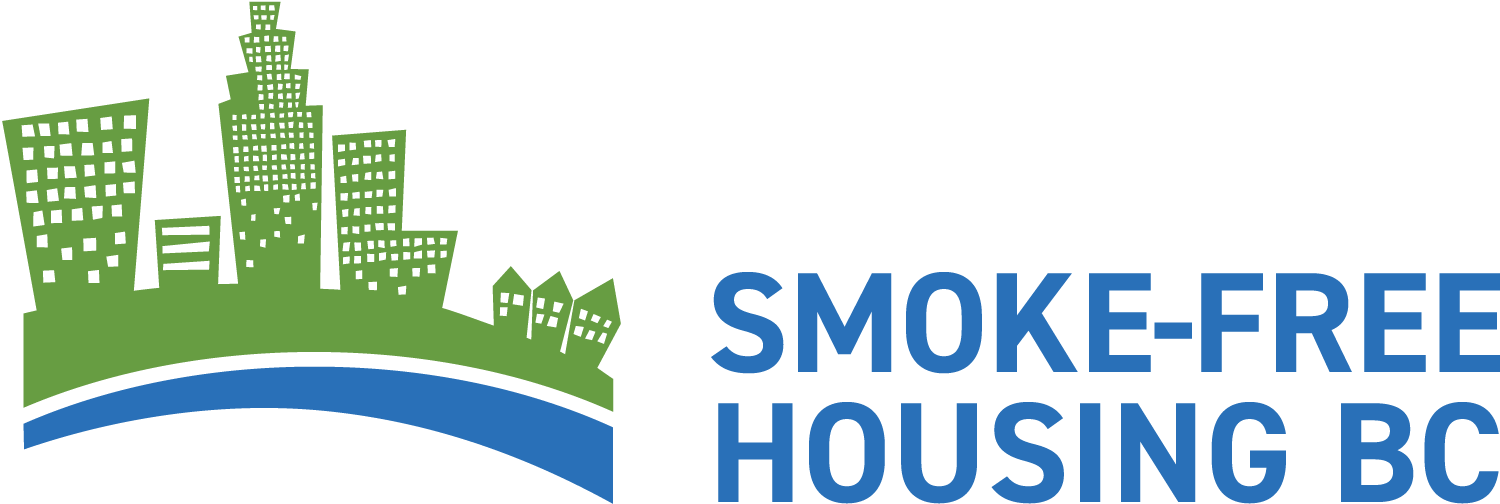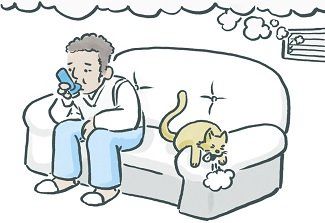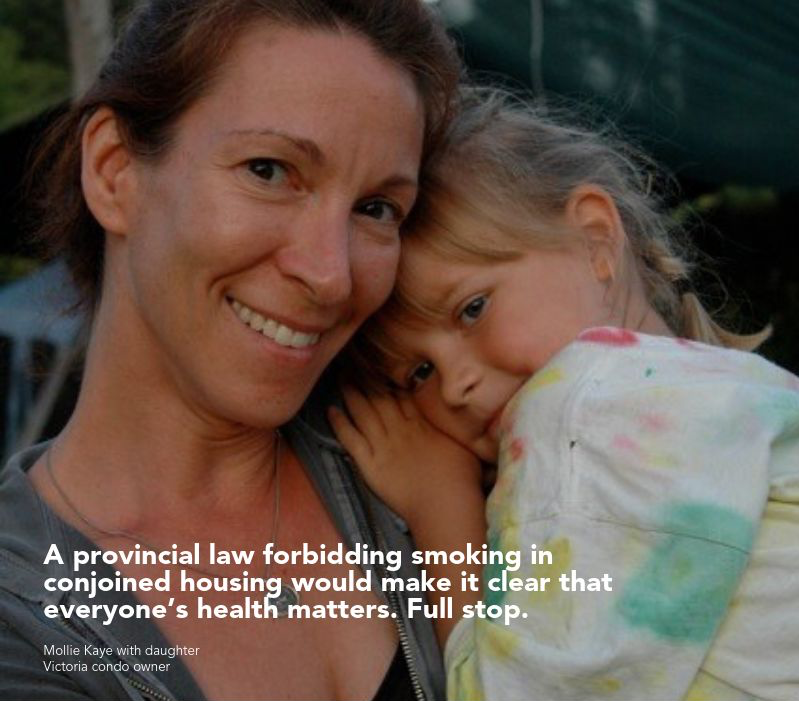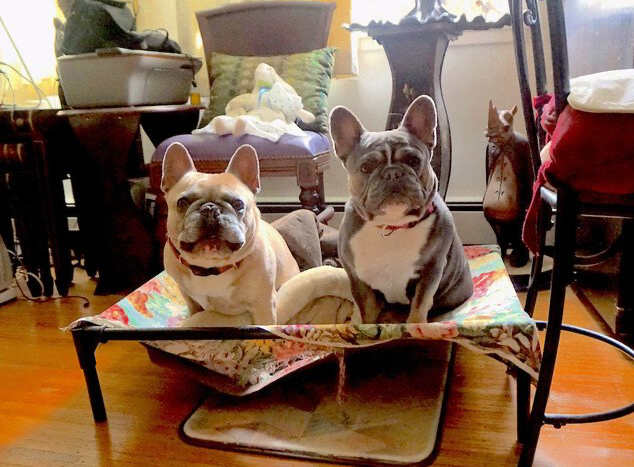Why Go Smoke-Free
Health & Safety
People who breathe second-hand smoke are at increased risk for:
- heart disease
- Stroke
- lung cancer
- emphysema
- acute respiratory problems (like asthma)
- chest infections
- excessive coughing
- throat irritation
Note: People who already have heart disease are at especially high risk of suffering adverse effects from breathing secondhand smoke and should take special precautions to avoid even brief exposure.
Unborn babies are at extra risk for:
- low birth weight and slow growth
- decreased blood flow, affecting the heart, lungs, digestive system, and central nervous system
Babies and children are at extra risk for:
- sudden infant death syndrome (SIDS)
- severity and frequency of asthma
- pneumonia - bronchitis
- Wheezing and coughing
- ear infections
- problems with cognition (thinking things through)
Why Living in a Smoke-Free Home Matters
There is no safe level of second-hand smoke exposure.
Exposure to second-hand smoke is not just a minor inconvenience to be tolerated. Even breathing second-hand smoke for a short amount of time can be hazardous to your health.
Second-hand smoke contains 7,000 toxic chemicals, approximately 70 of which can cause cancer. Non-smokers who are exposed to secondhand smoke at home or at work increase their risk of developing heart disease by 25–30%.
Thirdhand smoke is harmful to children and pets.
Third hand smoke is the residue from tobacco smoke, and can settle on furniture, walls and floors, carpets, tile, upholstery and other surfaces. It lingers for months, mixing with common pollutants to form carcinogens and particles that are especially hazardous for children and infants - who spend increased time on the floor and put things in their mouth.
Thirdhand smoke can be ingested, absorbed, or inhaled as the chemicals get released back into the air and cannot be completely eliminated with normal household cleaning or by airing out rooms, opening windows, using fans or air conditioners. It builds up over time and remains in the home long after the smoking occurred.
The movement of second-hand smoke cannot be controlled.
Secondhand smoke knows no boundaries. Tobacco smoke particles and gases can travel from unit to unit through light fixtures, electrical outlets, plumbing fixtures, walls, ceiling crawl spaces, shared ventilation systems and from balconies and patios. Up to 65% of the air in your home will come from another unit, hallway or exterior.
Air filters, purifiers and ventilation systems do not work.
Opening windows, using fans, air filters, air conditioning and ventilation systems do not eliminate all the chemicals in second-hand smoke and should not be considered viable alternatives to smoking bans in multi-unit housing. In fact, these systems can actually distribute second-hand smoke throughout a building.
The American Society of Heating, Refrigerating and Air Conditioning Engineers (ASHRAE), the world’s leading association of indoor air quality standards, determined that there is no air filtration or other ventilation technology that can completely eliminate all the carcinogens in second-hand smoke. In their updated position document on second-hand smoke in 2020, they recommend that indoor environments be 100% smoke-free to fully protect residents from second-hand smoke. In fact, this is why governments across Canada and internationally have banned all smoking in indoor public places like workplaces, restaurants and bars. The evidence is overwhelming that there is no indoor ventilation system that can protect people from toxins in second-hand smoke. It simply cannot be contained or eliminated.
The Science Behind the Risks
HealthLinkBC: The Harmful Effects of Second-Hand Smoke
Health Canada: Dangers of Second-Hand Smoke
The Health Consequences of Involuntary Exposure to Tobacco Smoke: A Report of the Surgeon General
Health Effects of Second-Hand Smoke, Centres for Disease Control and Prevention
(CDC:
updated January 2018)
Related
Smoking marijuana in multi-unit residential settings
ThirdHand Smoke Resource Centre
Remediating Thirdhand Smoke Pollution in Multi-unit Housing
ASHRAE position document
on Environmental Tobacco Smoke.
Why ventilation is not a solution to second-hand smoke. updated July 2020.
Quitting Resources
QuitNow.ca - A FREE, province-wide service to help British Columbians quit smoking and stay quit. Support services include access to experienced Quit Coaches by phone [1.877.455.2233] or live chat, a three month mobile texting program, a Community Forum and a personalized Quit Plan.
Vancouver General Hospital Smoking Cessation Clinic
The clinic provides free, one-on-one support by a doctor or nurse trained in nicotine dependence (tobacco and vapour products). Appointments available in person, by phone or video/virtually. No referral needed. To make an appointment, please call 604-875-4800 (press "2"). View the VGH Smoking Cessation Clinic poster.
Subsidized Quitting Medications
The BC Smoking Cessation Program helps eligible BC residents who wish to stop smoking or using other tobacco products by covering one of two treatment options below:
- Prescription smoking cessation medications, or
- Nicotine Replacement Therapy (NRT) products
Benefits & Cost Savings
Benefits of Adopting a Smoke-Free Policy
Saves time & money
- Reduces cleaning, repair, painting and overall maintenance costs. Many building owners and property managers have said that cleaning a smoking unit often costs 2-3 times as much as cleaning a non-smoking unit.
- Eliminates conflict between residents due to smoke transfer.
- Less time and costs spent by property managers and councils addressing second-hand smoke complaints
- Protects against litigation by residents seeking accommodation for disabilities/ conditions aggravated by second-hand smoke at Human Rights and Civil Resolution Tribunals
Reduces risk of fires
- Tobacco materials are the #1 source of fire-related deaths across Canada. In BC, fire-related deaths increased by over 2.5 times, rising from 28 in 2019 to 59 in 2021. (The Office of the Fire Commissioner’s 2022 annual report)
- Smoking-related fires are commonly caused by a dropped cigarette; often by someone who has fallen asleep or may be under the influence of alcohol or drugs.
- A dropped cigarette may lie in furniture or bed linens and could smolder for up to 30-45 minutes. The smoldering cigarette can cause smoke which contains carbon monoxide and other highly toxic gases that can put residents at risk of injury or death.
Protects resident health
- Second-hand smoke cannot be controlled and seeps through ventilation systems, electrical outlets, plumbing, cracks/gaps in walls & floors.
- Second-hand smoke causes heart/lung disease, respiratory illness and cancer in non-smokers.
- Breathing second-hand smoke can cause sudden infant death syndrome (SIDS) .
- Second-hand smoke makes children more vulnerable to developing asthma, ear infections, bronchitis and pneumonia.
- There is no amount of risk-free exposure to second-hand smoke. Breathing even a little second-hand smoke can be dangerous.
- Adults who breathe second-hand smoke experience immediate adverse effects on their cardiovascular systems, which can trigger heart attacks.
- Pregnant women exposed to second-hand smoke are more likely to have babies who have a higher risk for serious health problems (including low birth weight and lung problems).
Addresses health inequities among vulnerable populations
- One-quarter of the population suffers from medical conditions, such as asthma and heart disease that are worsened by exposure to second-hand smoke.
- Many residents living in affordable housing have higher rates of disability and chronic disease. Reducing risk factors like exposure to second-hand smoke could result in improved health outcomes for residents in affordable housing.
- Some people wait years to secure a subsidized unit, only to find themselves and their families involuntarily exposed to second-hand smoke on a regular basis.
- People living in subsidized, affordable housing often don't have the luxury of choice and thus have unequal access to safe and healthy homes. A clean and safe environments should be a basic right for people who don't have other housing options.
- A 2014 study by the US Centre for Disease Control found that almost $500 million per year could be saved by banning smoking in all government subsidized housing.
Related - The Case for Smoke-Free Multi-unit Housing: Why Government Action Cannot Wait
Market Demand
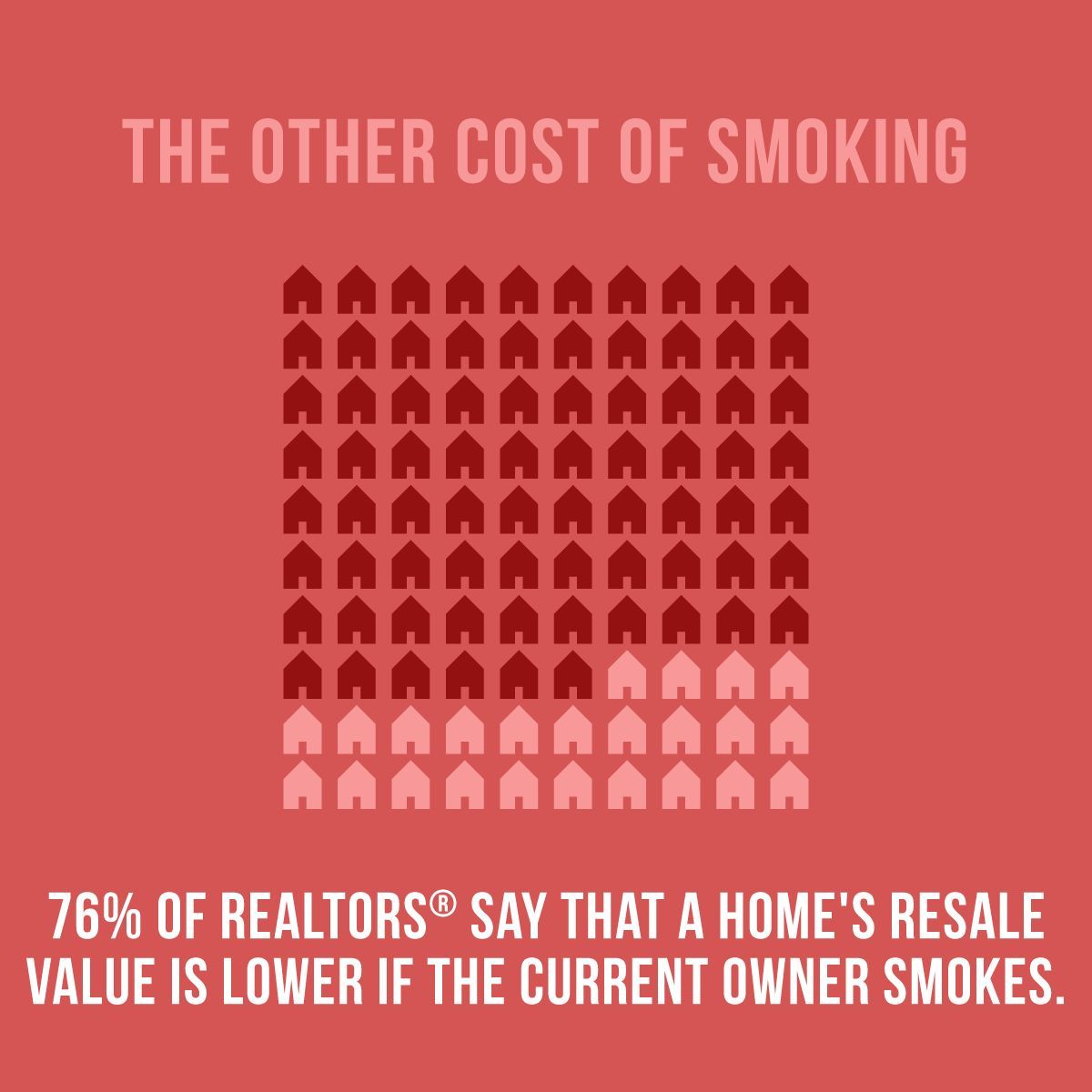
It Pays To Go Smoke-Free
British Columbia has one of the lowest smoking rates in the country. Residents are used to smoke-free policies at work, restaurants, bars and public places. They expect the same protections in their homes. According to surveys we commissioned in 2008, 2013 and 2018, the demand for smoke-free housing has skyrocketed. While there is a critical shortage of 100% smoke-free housing in BC, more and more landlords and strata corporations are responding to this obvious marketing opportunity and going smoke-free.
A
2015
survey
of BC REALTORS® found that a condo’s resale value is lower and it is more difficult to sell if the current owners smoke. Going smoke-free is good for residents and good for the bottom line.
British Columbians Overwhelmingly Prefer Smoke-Free Housing
In June 2018, Insights West, a Vancouver-based market research firm (acquired by Leger360.com in 2021), conducted a survey of 833 residents living in multi-unit housing in all Health Authorities across BC. They surveyed residents to determine exposure to second-hand smoke in the home and support for smoke-free housing in apartments and condominiums. Given that almost half of British Columbians live in multi-unit housing (42% province-wide and over 60% in the City of Vancouver), smoke-free housing is becoming a non-negotiable amenity and deal breaker.
The vast majority of multi-unit housing residents surveyed consider second-hand smoke harmful and would prefer to live in a 100% smoke-free home. Alarmingly, over half of residents reported having been exposed to second-hand tobacco and cannabis smoke in the home. It should be highlighted, that of those surveyed, 18% of residents reported having minors in their home and 29% having someone in their household with a health condition made worse by exposure to second-hand smoke.
- 8 in 10 support landlords and strata corporations banning smoking in the building, including all private units and balconies.
- 9 in 10 think that people considering becoming new residents should know which units in the building are designated as smoking units.
- 8 in 10 think that people considering becoming new residents should know if the previous resident was a smoker.
- 7 in 10 support the idea of landlords being allowed to designate a building as smoke-free - without 'grandfathering' existing renters who do not have a no-smoking term in the tenancy agreement. They would need to provide existing renters with a six-month written notice prior to the non-smoking policy coming into effect.
- 7 in 10 support the provincial government all NEW market rate rentals and affordable housing complexes 100% smoke-free to address the extreme shortage of smoke-free multi-unit housing in BC.
- 7 in 10 support the idea of all new BC condominium developments having a non-smoking Bylaw by default that applies to all units, including balconies, within the condo complex. Should strata corporations want to allow smoking in the building, they can vote amending the bylaw at a later date.
Reduced Litigation

Smoke-Free Policies Avoid Litigation
Second-hand tobacco and cannabis smoke complaints are becoming increasingly common in multi-unit housing. More and more landlords and strata corporations are being held accountable for failing to adequately address complaints of second-hand smoke.
Smoke-free policies are legal, enforceable and can help avoid litigation in courts, and residential tenancy or civil resolution tribunals. Investigating smoking complaints are time consuming, costly and not covered by most insurance plans. Plus, if residents with pre-existing medical conditions suffer adverse health outcomes due to exposure to second-hand smoke, landlords or Strata Corporations may be faced with a human rights complaint.
Click here to read a few cautionary takes from decisions out of the BC Civil Resolution Tribunal and the Human Rights Tribunal.
More Reasons for Going Smoke-Free
More reasons:
- Adopting a non-smoking policy is legal, easy to do and enforceable.
- People with disabilities or medical conditions adversely impacted by exposure to second-hand smoke may have a right to accommodation under the Human Rights Code. In the Leary case, the Strata was ordered to pay $7500 to an owner who suffered from asthmatic bronchitis for failure to take meaningful action to address her complaints of second-hand smoke. This is despite that fact that smoking was allowed in the building.
- People who are allowed to smoke in multi-unit housing complexes do not have unfettered rights to smoke. If their smoke impacts the health and use and enjoyment of other residents and found to be a nuisance, they can be required to cease smoking on the premises.
- Strata Corporations that adopt 100% non-smoking bylaws do not have to grandfather existing owners who reside in the complex at the time the bylaw is passed. Read the 2016 BC Supreme Court case, The Owners, Strata Plan NW 1815 v. Aradi for more information.
- Smoke-free policies are not discriminatory because they do not prohibit anyone from renting or owning a unit. They merely set rules for activities permitted on the property. There is no constitutional right to smoke and smokers are not a protected class under The Canadian Charter of Rights and Freedoms.
- People with approval for medical cannabis, who seek accommodation for an exemption from a non-smoking bylaw, must consider options that won’t compromise the health or enjoyment of other residents, such as smoking in an outside area or using edibles to ingest the cannabis rather than emitting second-hand smoke.
Related
- Read
case law highlights
for examples of landlords and strata corporations that failed to adequately address second-hand smoke complaints.
